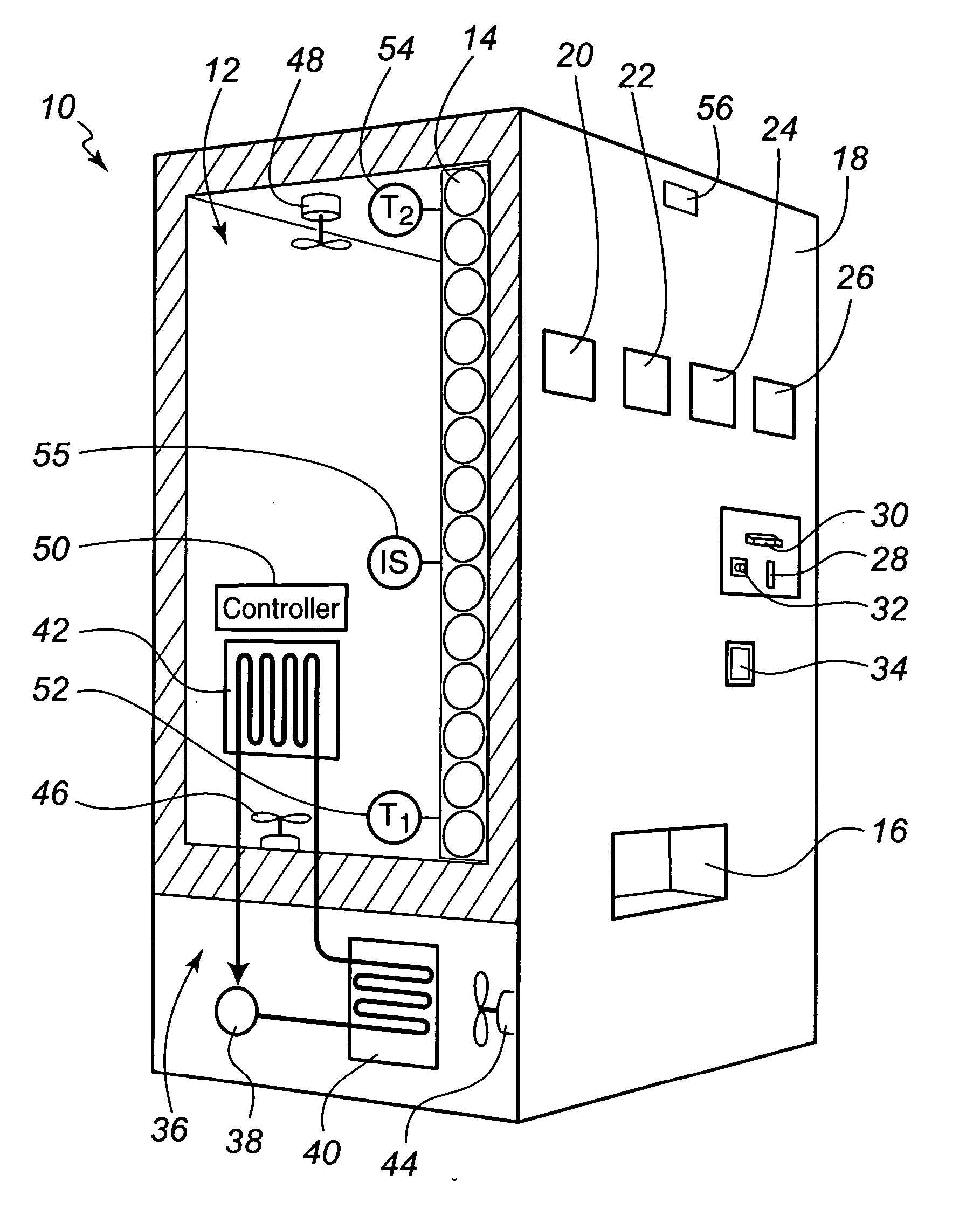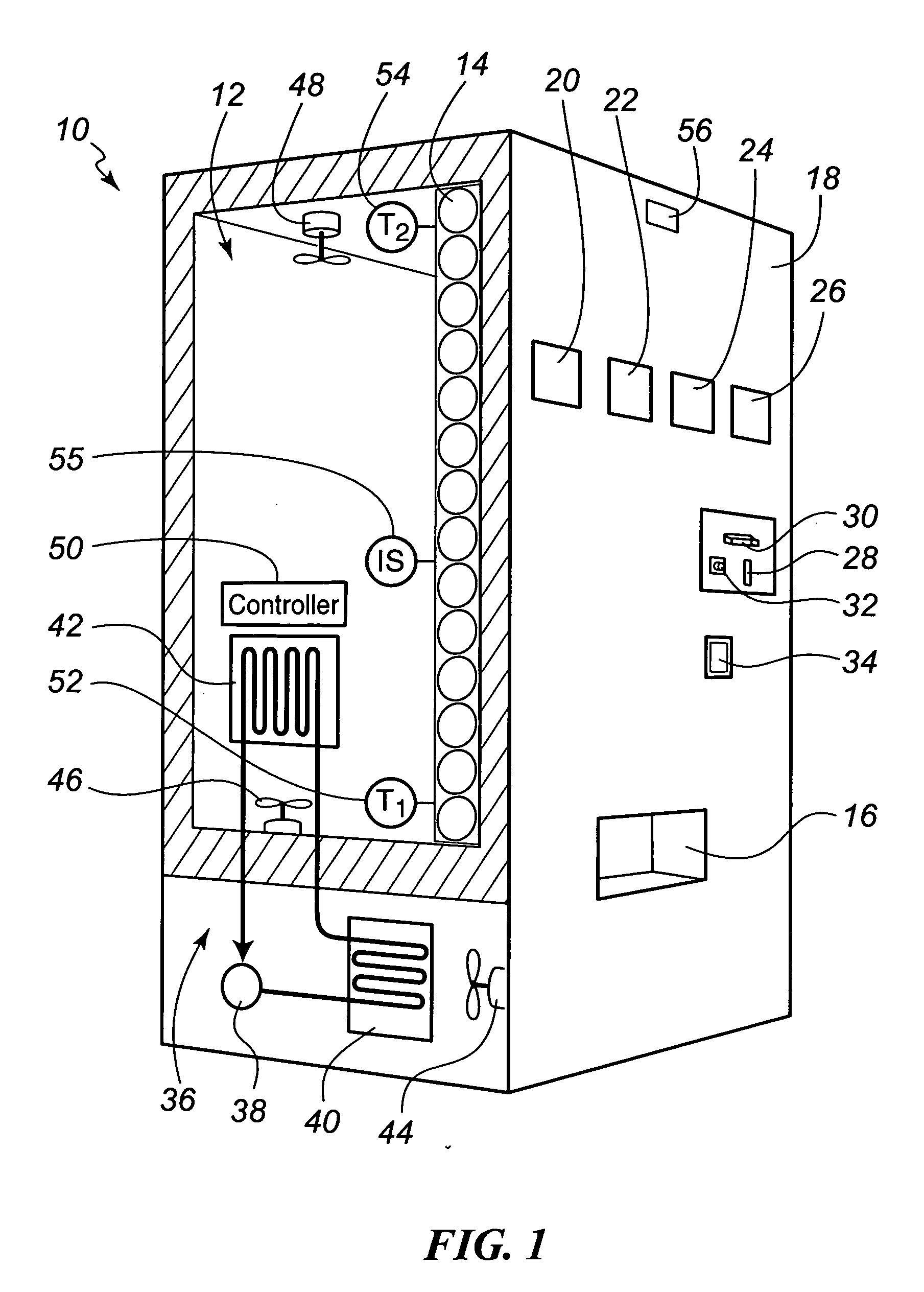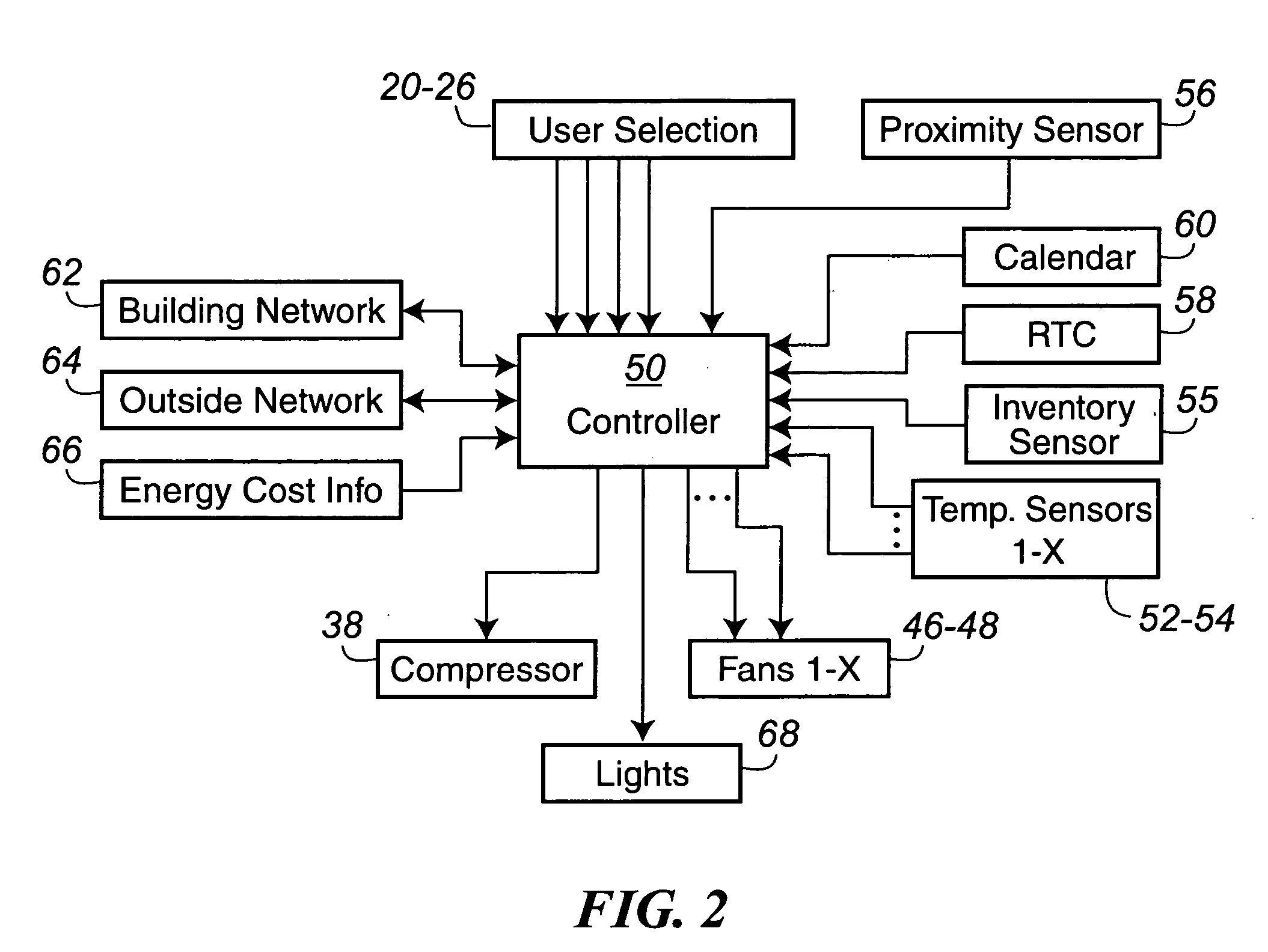[0012] In view of the above, it is an objective of the present invention to provide a new and improved vending
machine control system that decreases the energy consumption of the vending machine while ensuring that an appropriate supply of products to be vended are available at all times. More particularly, it is an objective of the present invention to provide a new and improved vending
machine control system that utilizes an adaptive energy usage profile
control system to minimize
power consumption while ensuring that an adequate supply of product is available at the appropriate temperature for vending.
[0015] After the pattern of learned activity is established for the location of the vending machine, the
control system in a preferred embodiment will build and maintain a dynamic operational control calendar, and initiate a program to adjust the vending machine's
thermal control operations based on the learned
purchasing patterns of the consumers. The
control system will manage the energy consumption levels of the vending machine to maximize savings during learned periods of little or no demand. By utilizing this
artificial intelligence (AI), the system of the present invention will be capable of adapting to changes in seasons, work schedules and demands to ensure that maximum energy savings are achieved. This
adaptive control program will continually monitor,
record and adapt to changes in demand for product, energy usage and duration of
thermal recovery cycles and track changes in real time. By applying the advanced learning algorithms, more dramatic energy savings can be achieved than by those delivered by previous fixed calendar systems. This will result in greater energy savings and reduced cost, while ensuring that an appropriate amount of product is ready to be vended.
[0016] In an alternate embodiment of the present invention, the system includes an interface to a building control system and / or other outside network. Such additional information as provided by such networks greatly enhances the ability of the system of the present invention to manage energy usage based on anticipated demand. In one embodiment which includes an interface to an existing building control system, the vending control system will receive occupied or vacant status indicators from temperature, lighting and security sub systems as well as indoor and outdoor actual temperature and
humidity data. The advanced predictive algorithms of the system of the present invention will then use these data elements and indicators as additional data points to track and predict product usage patterns.
[0017] In a further embodiment of the present invention the control system of the present invention will forward all of its sensed data to a
central repository or processor via a network. Alternatively, the control system will share all of its sensed data with other similar devices. In either implementation, the system of the present invention will
gain expanded knowledge relating to weather, demand for product and any other computational or sensed factors which will effect its management of ready-to-vend product on hand. Access to such external sensed points and factors will provide an additional level of input to the control and
energy management function of the control system of the present invention and to the network. This will greatly improve the control system's ability to predict and manage both ready-to-vend quantities of product as well as energy used by the vending machine to maintain Energy Star certification.
[0018] In a further preferred embodiment, the system of the present invention will be
energy cost aware. By having access to the cost of energy being supplied to it by a load serving entity, the control system of the present invention can take
advantage of real time or
time of day (TOD) price changes. During low
energy cost periods, the control system can operate the vending machine to store cooling in its inventory of product and then ride through high cost periods by using advanced temperature and demand management algorithms to balance
product demand, energy use and ready-to-vend product availability to achieve maximum energy and
cost savings. This balancing of
energy cost, demand for product and temperature management will be based on learned processes, which can dynamically alter the operation of the unit based on real time and historical statistical data.
[0019] A further preferred embodiment of the system will permit it to adjust the price of the vended product in a owner specified relationship to the cost of energy and the demand level for the product. This will provide a means for recovering energy cost differentials in a traditional supply / demand market dynamic.
 Login to View More
Login to View More  Login to View More
Login to View More 


